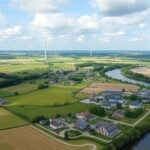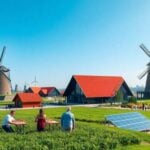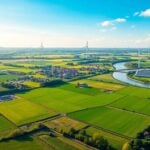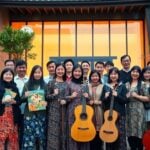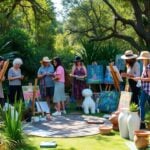A needs statement is a critical component of any grant proposal, serving as the foundation upon which the entire application is built. It articulates the specific issues or challenges that a project aims to address, providing a compelling rationale for why funding is necessary. The purpose of a needs statement is not merely to outline problems but to create a narrative that resonates with potential funders, demonstrating the urgency and significance of the need.
A well-crafted needs statement can capture the attention of grant reviewers, making them more inclined to support your project. Moreover, a needs statement should reflect a deep understanding of the context in which the need exists. It should convey not only what the need is but also why it matters.
This involves connecting the dots between the identified need and broader societal issues, such as economic disparities, health crises, or educational gaps. By framing the need within a larger context, you can enhance its importance and relevance, making it more likely that funders will see the value in supporting your initiative.
Identifying the Target Population and their Needs
Defining the Target Population
For instance, if your project aims to improve literacy rates among children in low-income neighborhoods, you must delve into the demographics of that population. Consider factors such as age, socioeconomic status, cultural background, and existing educational resources. By painting a clear picture of your target audience, you can tailor your needs statement to address their unique circumstances.
Articulating Specific Needs
Once you have identified the target population, it is essential to articulate their specific needs. This requires engaging with community members, conducting surveys, or reviewing existing research to gather insights into their experiences and challenges. For example, if you are working with at-risk youth, you might discover that they face barriers such as lack of access to technology or mentorship programs.
Creating a Compelling Case
By highlighting these specific needs in your statement, you can create a compelling case for why your project is necessary and how it will directly benefit those you aim to serve.
Gathering Data and Research to Support the Need
To strengthen your needs statement, it is vital to gather data and research that substantiate the identified need. This evidence can come from various sources, including academic studies, government reports, and community assessments. For instance, if you are proposing a mental health initiative for veterans, citing statistics on the prevalence of PTSD among this population can provide a solid foundation for your argument.
Data not only lends credibility to your claims but also helps paint a vivid picture of the urgency surrounding the need. In addition to quantitative data, qualitative research can also be invaluable in supporting your needs statement. Personal stories and testimonials from individuals within the target population can humanize the statistics and create an emotional connection with funders.
For example, including a brief narrative from a veteran who has struggled with mental health issues can illustrate the real-world implications of the problem. By combining both quantitative and qualitative evidence, you can create a robust needs statement that resonates with grant reviewers on multiple levels.
Articulating the Impact of the Need
Articulating the impact of the identified need is essential for demonstrating why addressing it is crucial. This involves explaining not only how the need affects individuals but also how it has broader implications for the community or society as a whole. For instance, if you are addressing food insecurity among families in your area, you might discuss how this issue leads to poor health outcomes, decreased academic performance in children, and increased healthcare costs for local systems.
By illustrating these ripple effects, you can underscore the importance of your project in creating positive change. Furthermore, it is important to convey a sense of urgency in your articulation of impact. Funders are often looking for projects that address pressing issues that cannot be ignored.
Highlighting statistics that show rising trends or worsening conditions can help create a sense of immediacy. For example, if recent data indicates that food insecurity rates have doubled in your community over the past five years, this information can serve as a powerful motivator for funders to act now rather than later.
Connecting the Need to the Grant’s Goals and Objectives
A successful needs statement must clearly connect the identified need to the goals and objectives of the grant for which you are applying. This requires a thorough understanding of both your project’s aims and the priorities of the funding organization. Take time to review the grant guidelines and identify key themes or objectives that align with your project.
For instance, if a grant focuses on improving educational outcomes for underserved populations, ensure that your needs statement explicitly ties into this goal by demonstrating how addressing literacy challenges among low-income children will contribute to improved academic performance. Additionally, it is beneficial to articulate how your project aligns with broader initiatives or movements within your field. For example, if there is a national push for mental health awareness and support in schools, linking your project’s objectives to this movement can enhance its relevance and appeal to funders.
By making these connections clear in your needs statement, you not only demonstrate alignment with grant priorities but also position your project as part of a larger solution.
Ensuring Clarity and Conciseness in the Statement
Clear and Concise Communication
When writing a needs statement, it is crucial to prioritize clarity and conciseness. Grant reviewers often have limited time to evaluate numerous proposals, so it is essential to present your information in a straightforward manner that is easy to digest. Avoid using jargon or overly complex language that may confuse readers; instead, aim for clear and direct communication.
Using Simple Language and Formatting
To make your needs statement easy to read, use simple sentences and bullet points where appropriate to break down information into manageable chunks. This will help reviewers quickly understand the key points you are making.
Focus on the Essentials
In addition to clarity, conciseness is equally important. A needs statement should be succinct while still conveying all necessary information. Aim to keep your statement focused on the most critical aspects of the need without unnecessary elaboration or repetition.
Effective Communication is Key
A well-structured needs statement that gets straight to the point will not only engage reviewers but also demonstrate your ability to communicate effectively—an essential skill in any grant-funded project.
Highlighting the Organization’s Capacity to Address the Need
In addition to outlining the need itself, it is crucial to highlight your organization’s capacity to address it effectively. This involves showcasing your organization’s experience, expertise, and resources that make it uniquely qualified to tackle the identified issue. For example, if your organization has successfully implemented similar projects in the past or has staff members with relevant qualifications and experience, be sure to include this information in your needs statement.
Moreover, discussing partnerships or collaborations with other organizations can further strengthen your case. If you have established relationships with local schools, healthcare providers, or community groups that will support your initiative, mention these connections as evidence of your organization’s ability to mobilize resources effectively. By demonstrating that you have both the capability and support necessary to address the need, you can instill confidence in funders regarding your project’s potential for success.
Reviewing and Revising the Needs Statement
The process of crafting a needs statement does not end with its initial draft; thorough review and revision are essential steps toward creating a polished final product. After drafting your needs statement, take time away from it before revisiting it with fresh eyes. This distance can help you identify areas that may require clarification or additional detail.
Consider seeking feedback from colleagues or mentors who can provide constructive criticism and suggest improvements. Additionally, ensure that your needs statement aligns with other components of your grant proposal. Consistency across all sections is vital for creating a cohesive narrative that effectively communicates your project’s goals and significance.
As you revise, pay attention to language consistency and ensure that key terms are defined clearly throughout your proposal. By investing time in reviewing and refining your needs statement, you enhance its overall quality and increase its chances of resonating with grant reviewers. In conclusion, crafting an effective needs statement is an essential skill for anyone seeking funding through grants or other financial support mechanisms.
By understanding its purpose, identifying target populations and their specific needs, gathering supporting data, articulating impact clearly, connecting with grant goals, ensuring clarity and conciseness, highlighting organizational capacity, and committing to thorough review and revision processes, you can create a compelling narrative that captures funders’ attention and secures necessary support for your initiatives.

